Rajkamal Kahlon
Which Side Are You On?
01 Dec 2022 - 09 Apr 2023
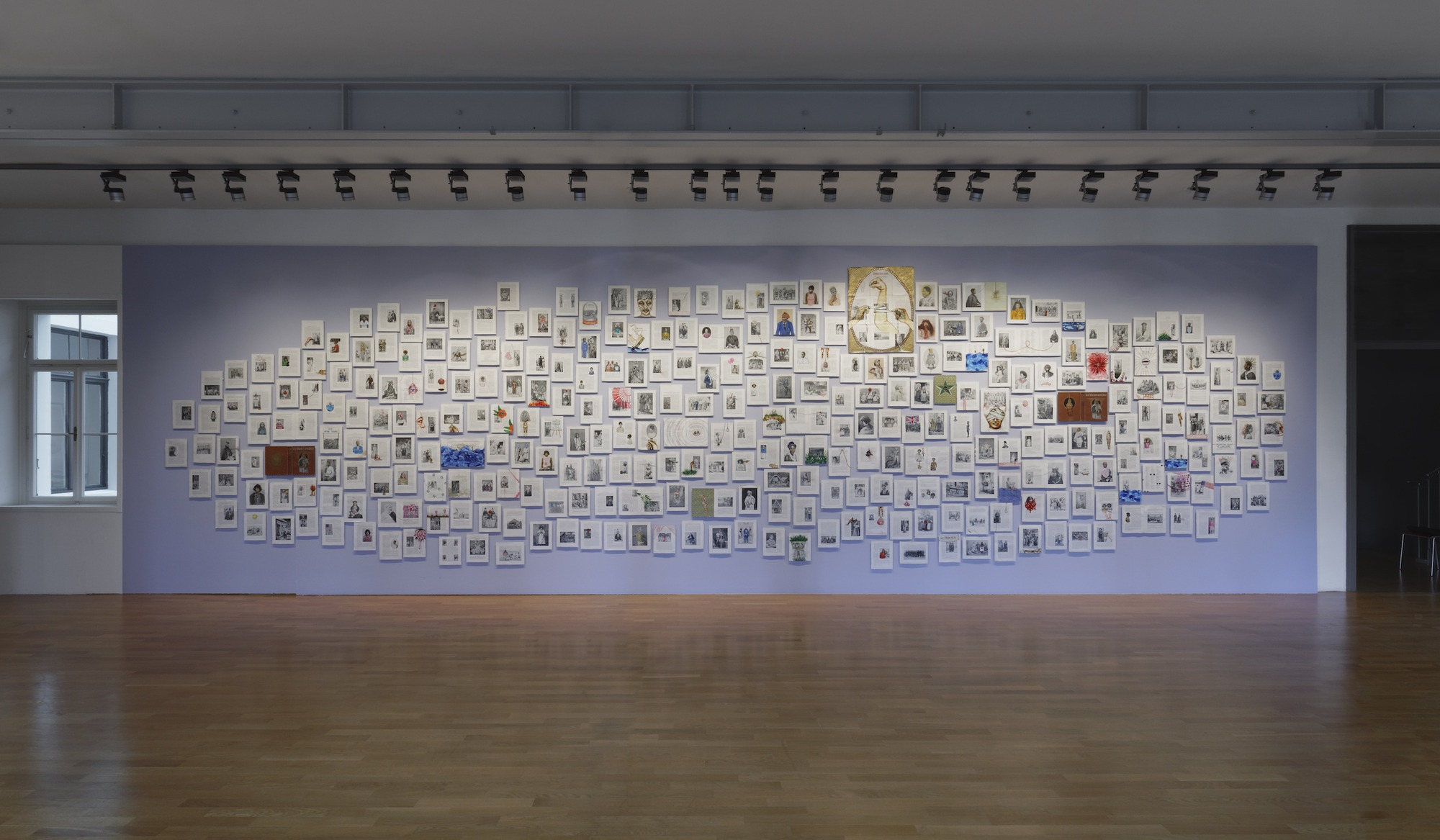
Rajkamal Kahlon, installation view People of the Earth (Die Völker der Erde) including approx. 340 drawings from the eponymousseries (2017–2021), MEWO Kunsthalle Memmingen, 2019, photo: MEWO Kunsthalle Memmingen
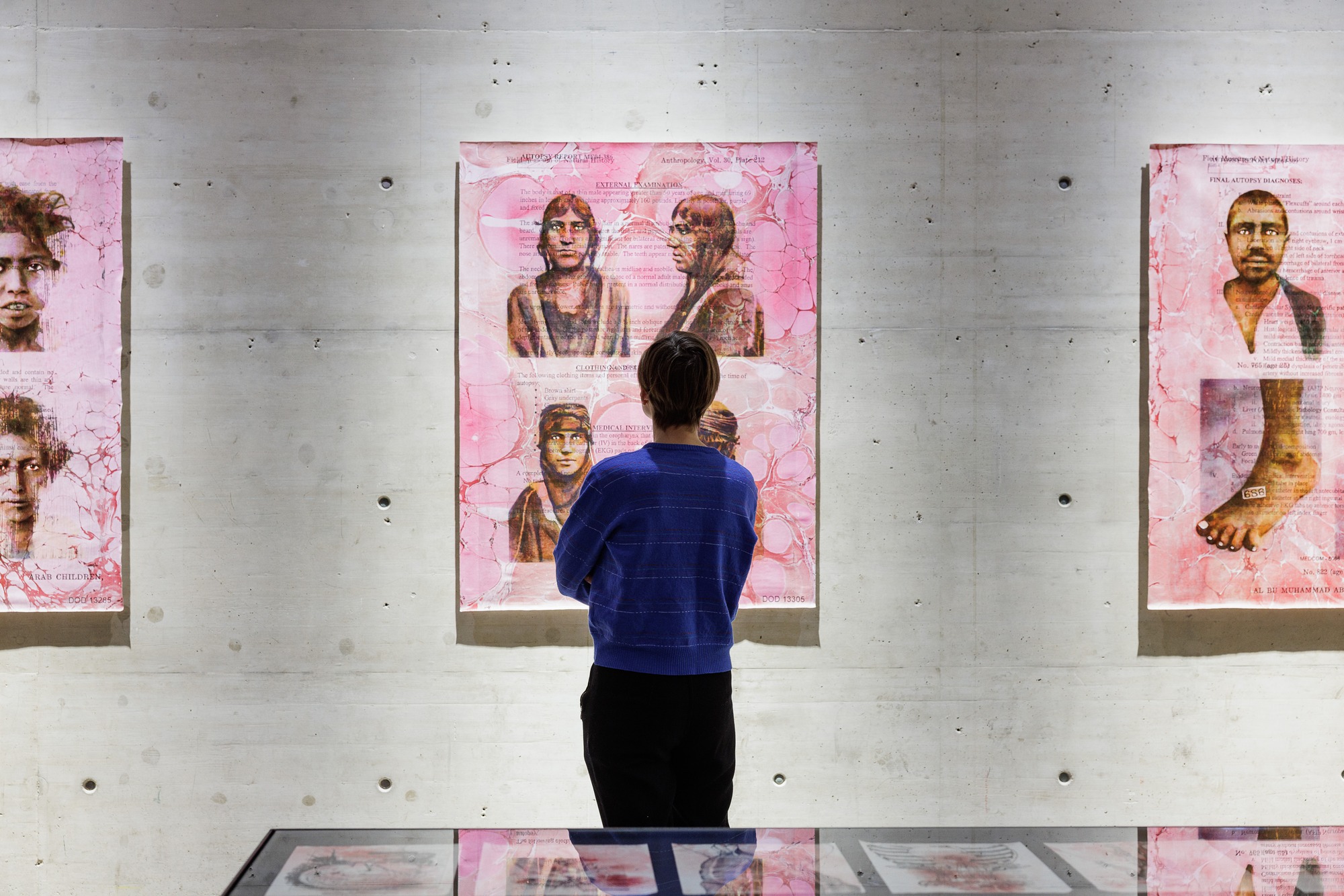
Installation view: Rajkamal Kahlon. Which Side Are You On?, Kunsthalle Wien 2022, photo: www.kunst-dokumentation.com
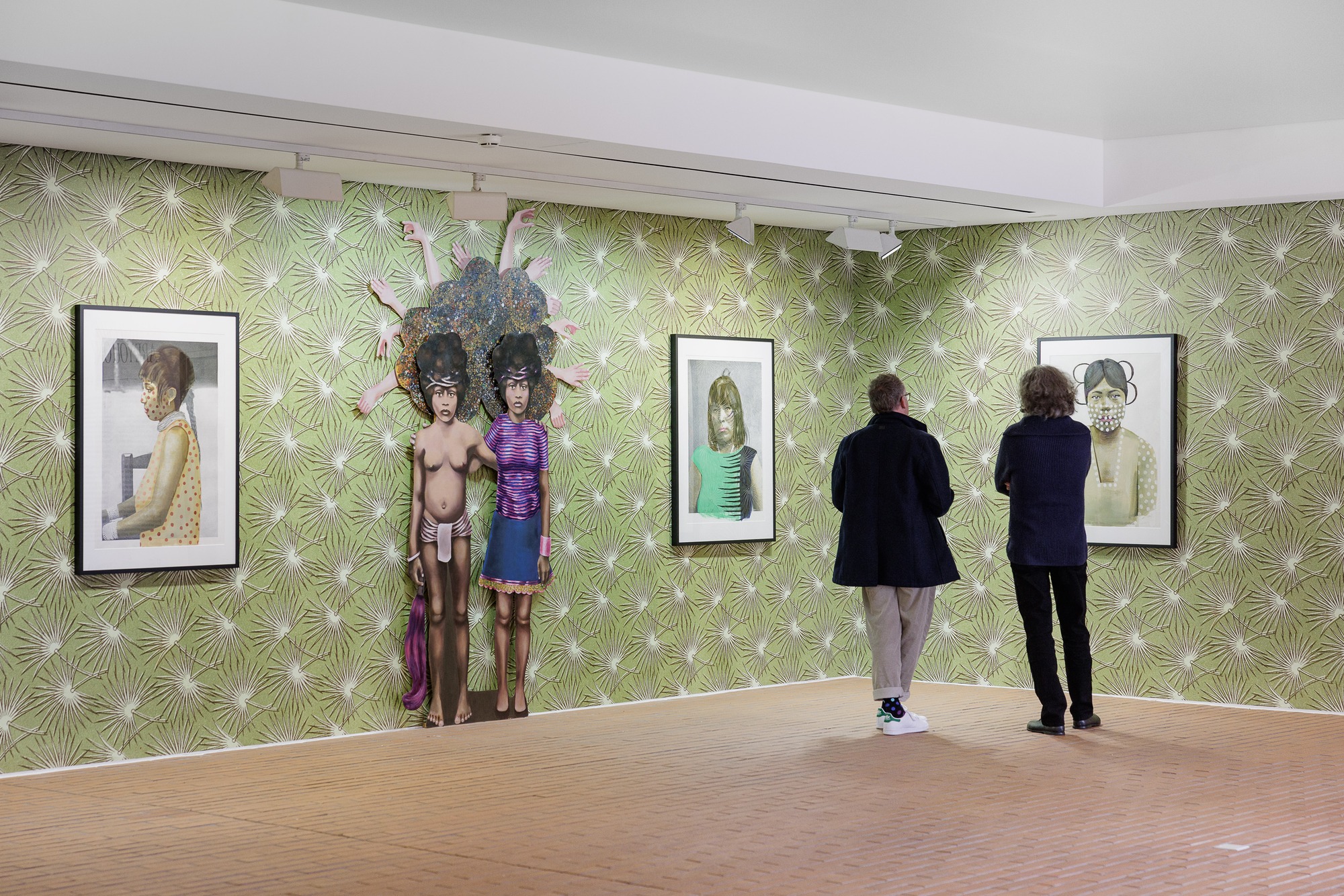
Installation view: Rajkamal Kahlon. Which Side Are You On?, Kunsthalle Wien 2022, photo: www.kunst-dokumentation.com
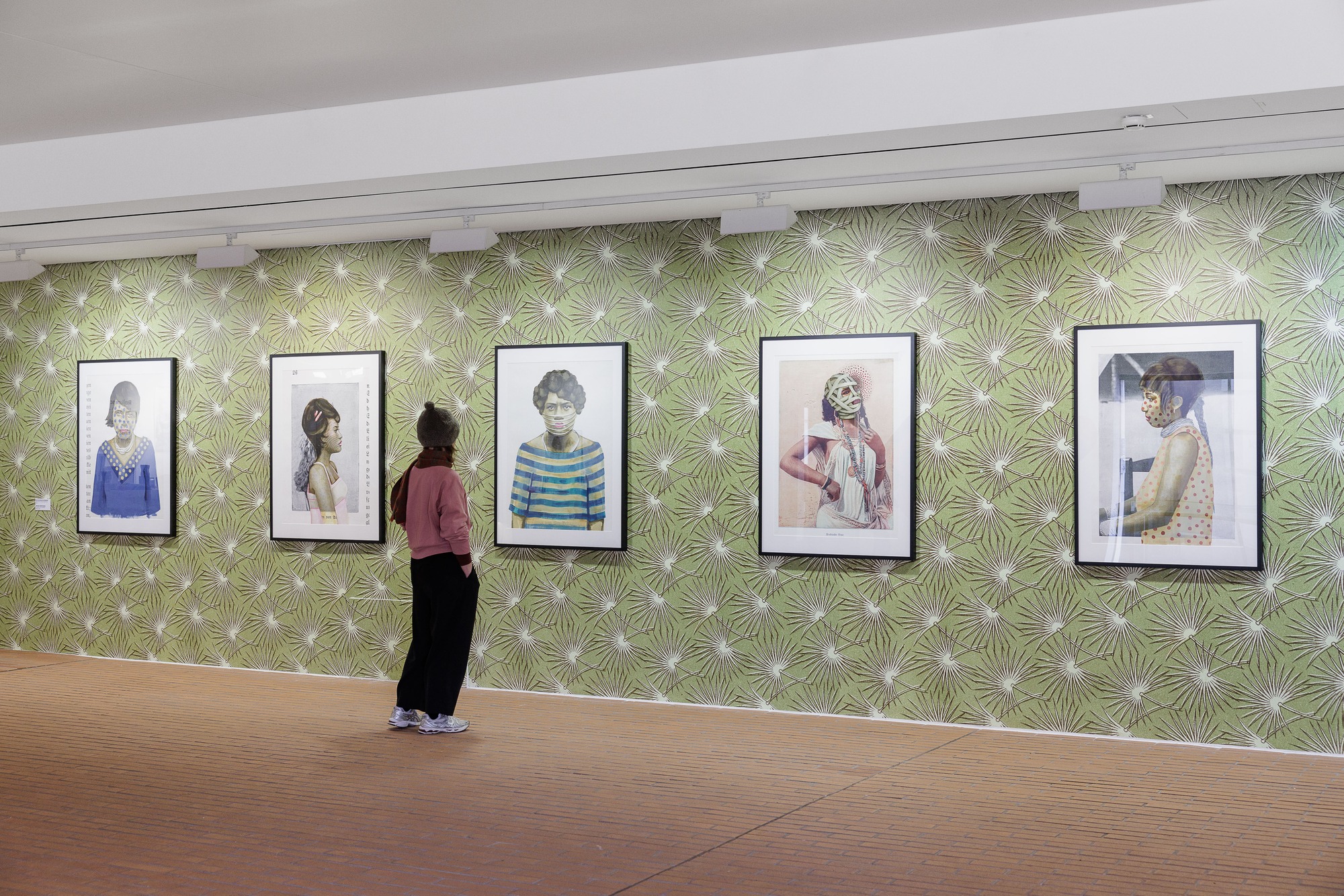
Installation view: Rajkamal Kahlon. Which Side Are You On?, Kunsthalle Wien 2022, photo: www.kunst-dokumentation.com
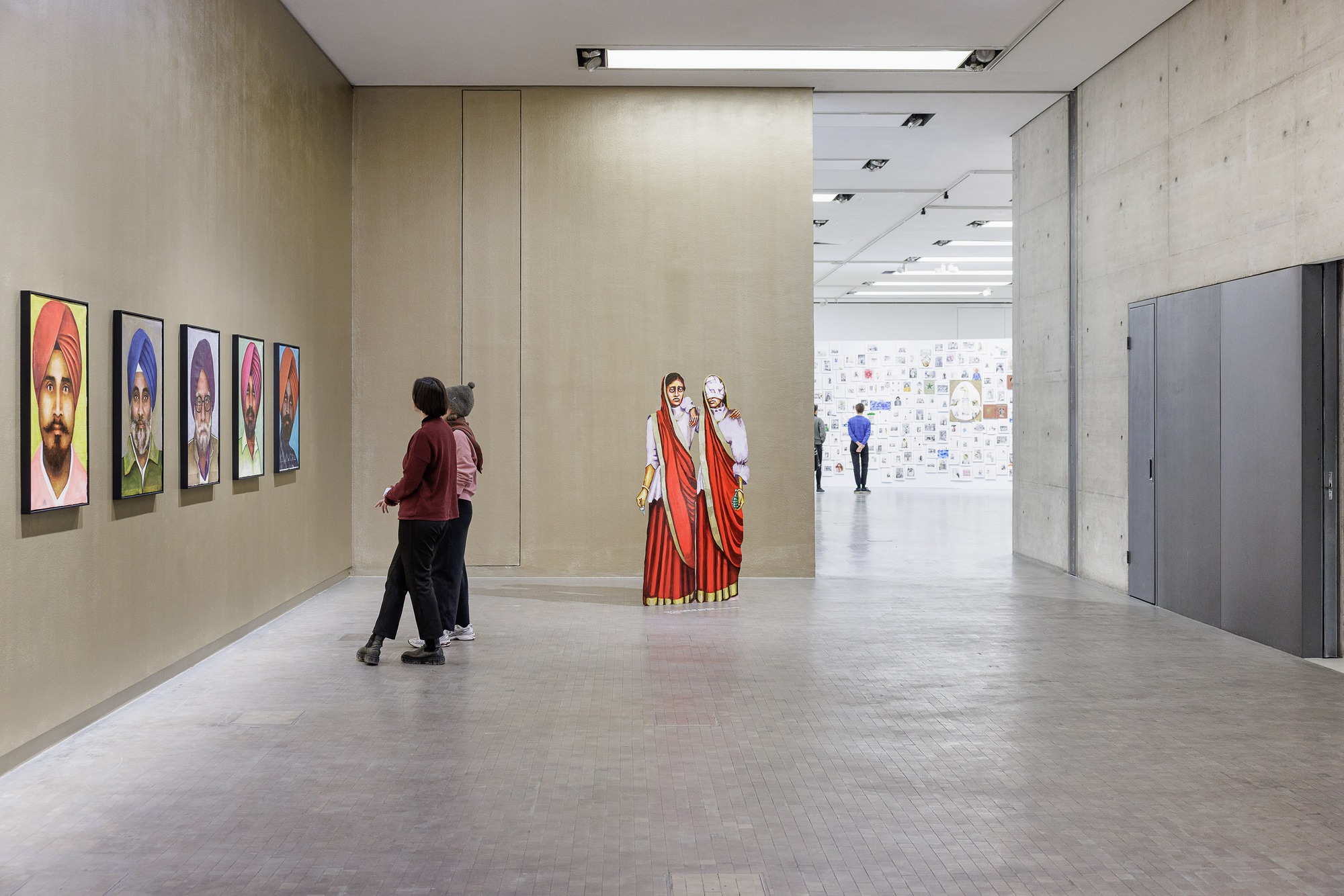
Installation view: Rajkamal Kahlon. Which Side Are You On?, Kunsthalle Wien 2022, photo: www.kunst-dokumentation.com
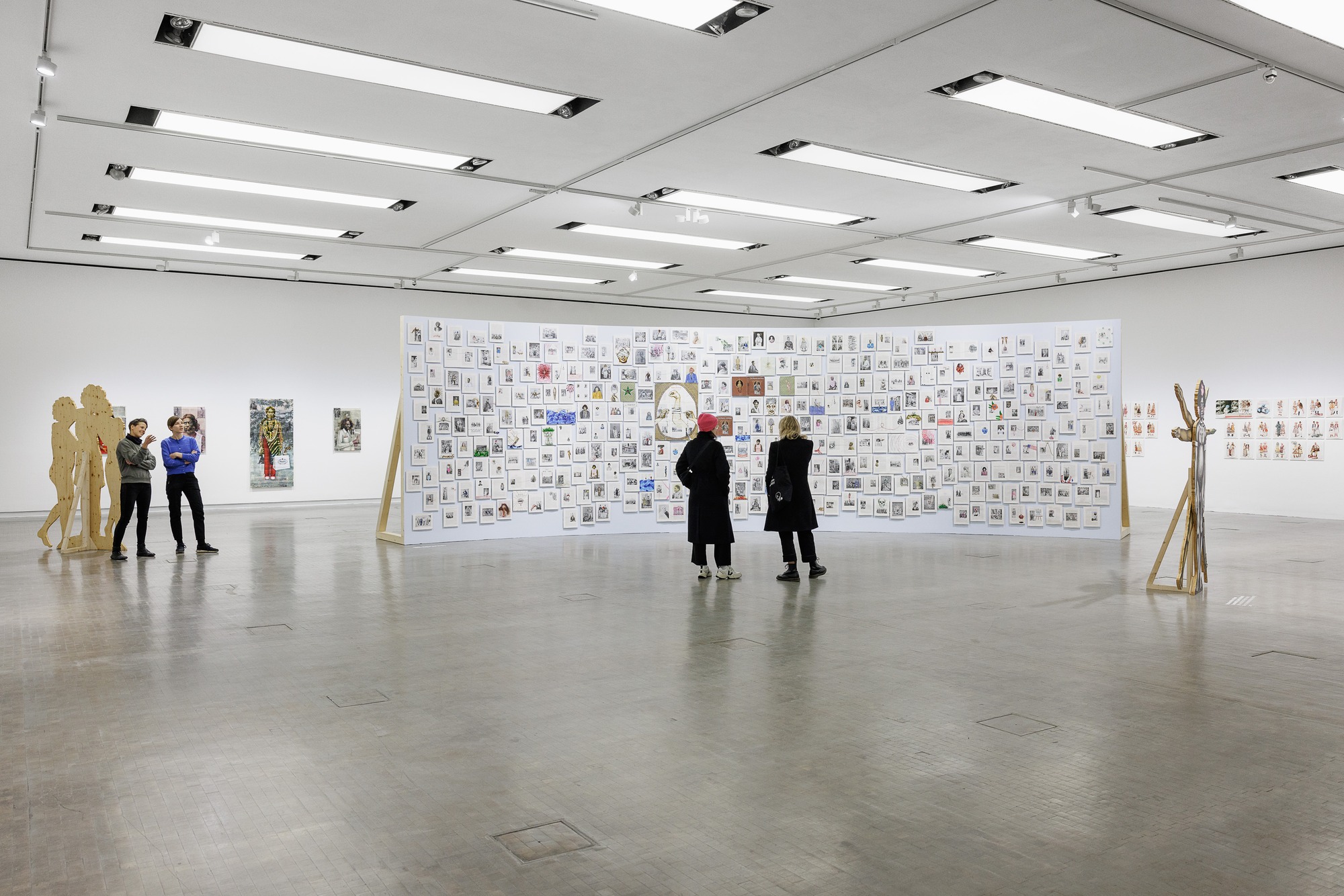
Installation view: Rajkamal Kahlon. Which Side Are You On?, Kunsthalle Wien 2022, photo: www.kunst-dokumentation.com
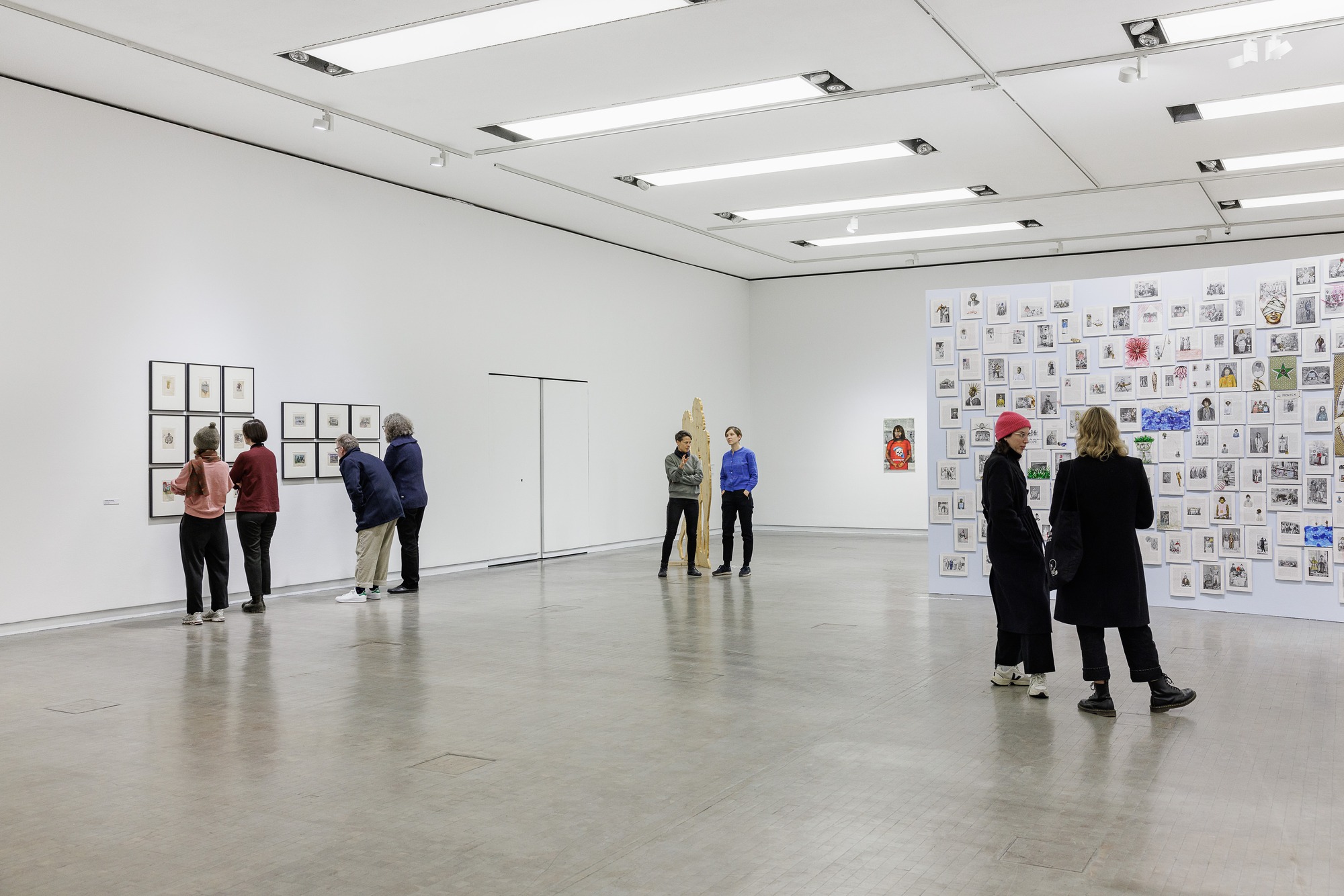
Installation view: Rajkamal Kahlon. Which Side Are You On?, Kunsthalle Wien 2022, photo: www.kunst-dokumentation.com
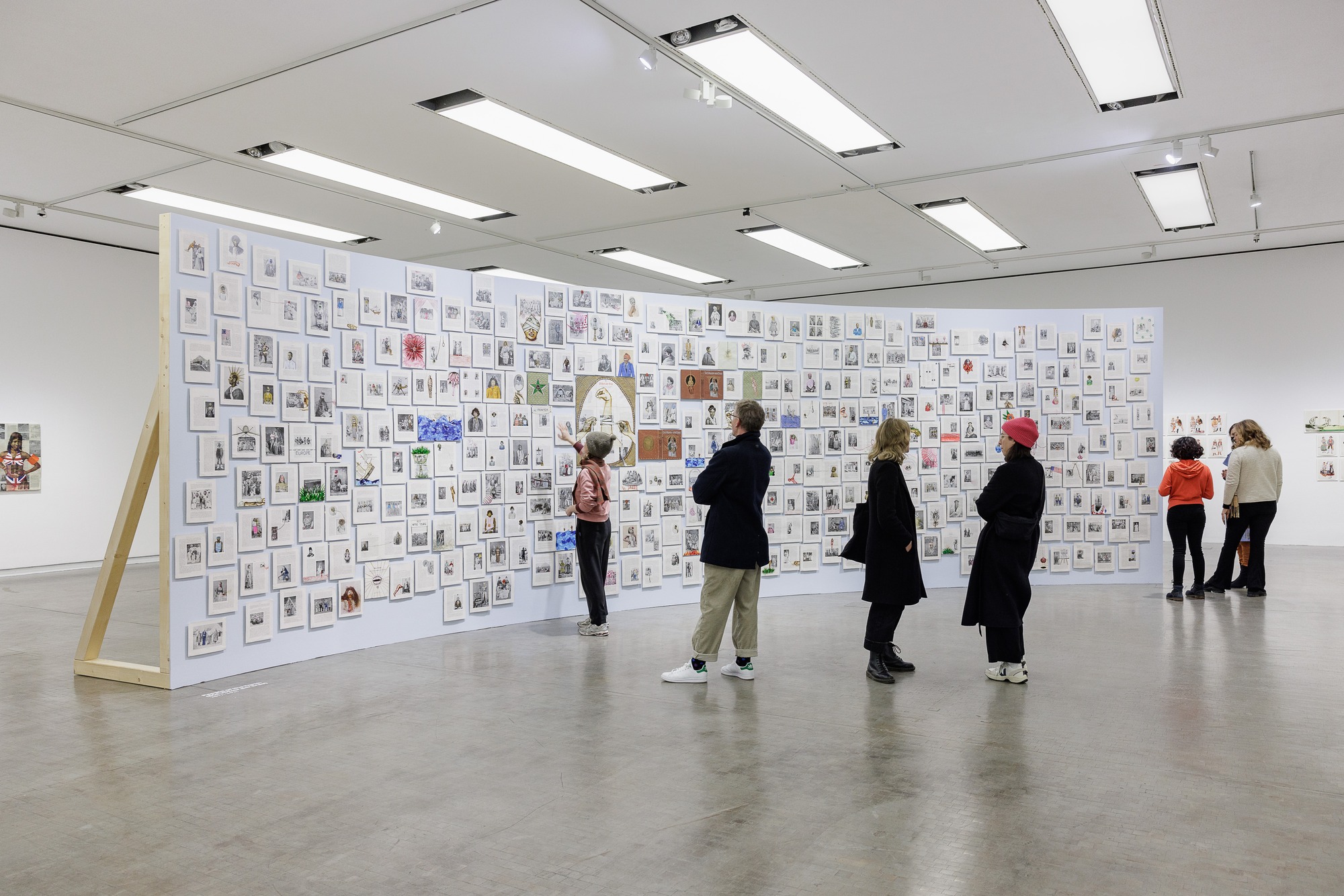
Installation view: Rajkamal Kahlon. Which Side Are You On?, Kunsthalle Wien 2022, photo: www.kunst-dokumentation.com

Installation view: Rajkamal Kahlon. Which Side Are You On?, Kunsthalle Wien 2022, photo: www.kunst-dokumentation.com
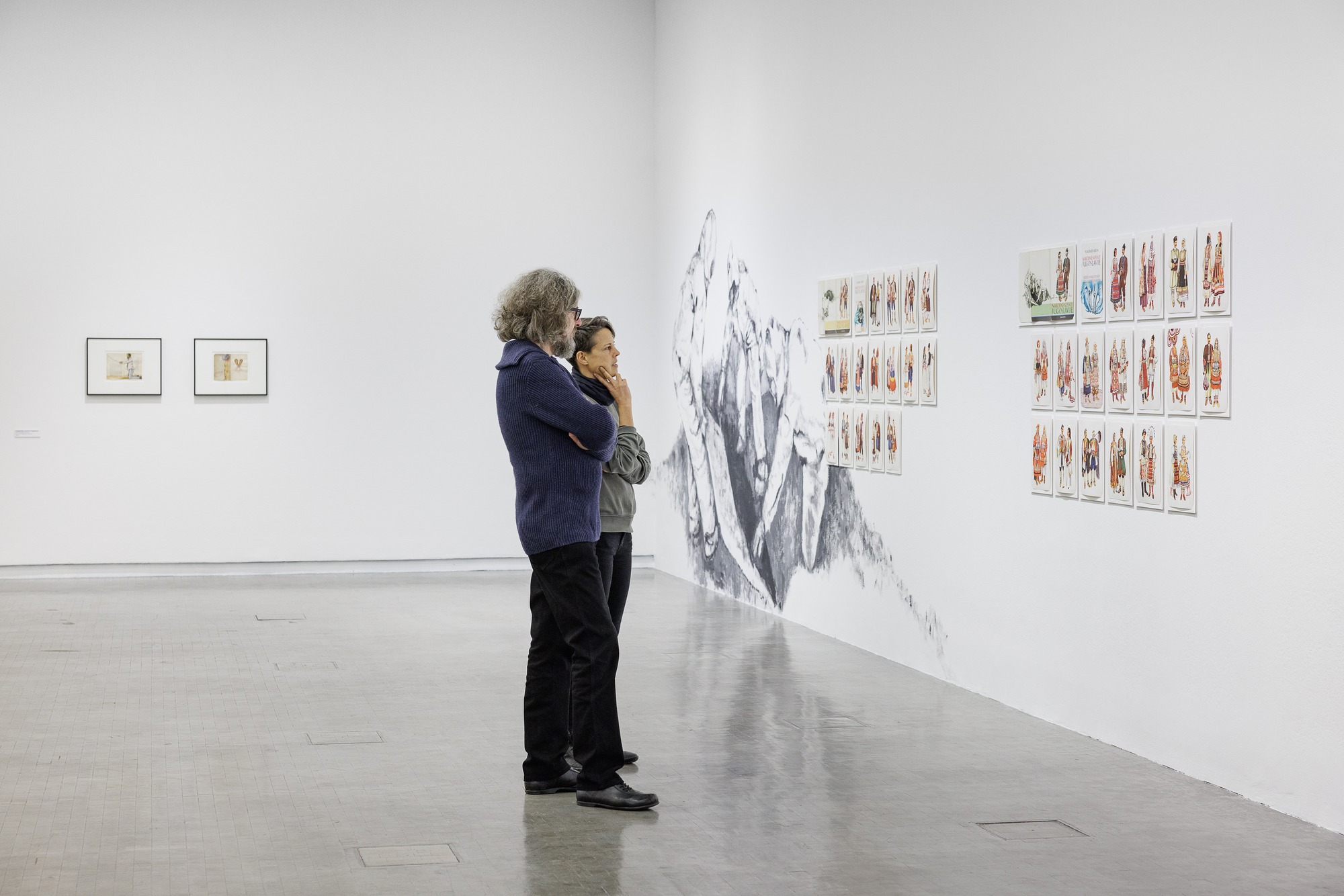
Installation view: Rajkamal Kahlon. Which Side Are You On?, Kunsthalle Wien 2022, photo: www.kunst-dokumentation.com
Which Side Are You On? brings together a selection of works from over twenty years of Rajkamal Kahlon’s practice, as well as several new commissions created for the exhibition at kunsthalle wien.
In her work, Kahlon explores the interrelatedness of power and visual regimes by looking into narratives that are seen as scientific and objective, and at the same time are deeply influential in forming the collective imagination and the way we see and interpret things around us.
There is a story within each of her works—whether from a book, a series of documents, or archival research. The books that Kahlon uses are not beloved, nor does she feel attached to the documents used— on the contrary, the books are often from the heyday of colonialism, with titles such as Cassell’s Illustrated History of India or Völker der Erde [People of the Earth], full of patronizing clichés, using the dubious scientific methods of nineteenth-century anthropology and ethnology to create an image of inferiority and otherness, justifying colonial and imperialistic expansion.
Kahlon takes the books apart—symbolically and physically—challenging their “objective” role. She transfers them to the canvas as a sort of primer to paint upon and overlays them with drawings and paintings of people otherwise subjected to the colonial gaze. She radically alters the colonial images so that her subjects, made into curios by the books’ photographers and authors, reassert their individuality and dignity. In You’ve Come a Long Way, Baby! (2022), a new work produced for this exhibition, Kahlon dresses a woman from an engraving originally entitled The Native Way of Climbing Cocoa Palms in Ceylon in a 2 red business suit, white shirt, and black heels. Through this new attire, the larger-than-life figure is an ironic commentary on the myth of social mobility in US-American society, but she also becomes a reminder of the resilience and insubordination of the local population when faced with an objectifying gaze.
Painting is central to this process and, in opposition to the history of Western painting, Kahlon sees it, in her own words, as “a form of care work—done in the service and from a sense of responsibility and care toward others.” Her practice aims at complicating and resisting the ways in which painting is often reduced to a luxury good. Instead, she opens a space of potentiality and offers a form of radical care for the protagonists of her works. Drawing and painting become sites of political and aesthetic resistance, and the violence inherent in colonial and ethnographic images is confronted with beauty, humor, sensuality, and seduction.
The exhibition takes its title from a song written by Florence Reece during a series of strikes, executions, and bombings that took place in Kentucky during the 1930s, known as the Harlan County War. Reece was the wife of a coal miner and union organizer, who was terrorized by police in her home due to her husband’s union activities. The song she wrote has been adapted and sung by countless singers in contexts of protest, including the Civil Rights Movement in the US in the 1960s. As the title of the show, the phrase “Which side are you on?” invites visitors to examine their consent to, even reiteration of, the violent process of “Othering”, through which the superiority of an imagined “we” is created by attributing traits of inferiority to people constructed as “others”. Through the defiant gaze of their protagonists, Kahlon’s paintings address the viewer directly: how are you implicated in this violence and injustice surrounding you?
There is no easy catharsis in Kahlon’s works; in fact, there is a certain building of unease. At first sight, her works are simply beautiful and seductive, radiating color—but as one comes closer, the violence hidden in them seeps out—be it a knife hidden behind the back of the pretty doll-like figure in Dear Yugoslavia, I Regret to Inform You … (2018), the hate crime whose victims are portrayed in Enter My Burning House (2021), or the military prison autopsy reports embedded in radiating pink backgrounds of Did You Kiss the Dead Body? (2012/2022). One of the important propositions of Kahlon’s work—that what is considered beautiful often comes hand in hand with violence—challenges the collective imagination by bringing its contradictions to the fore and exposing the privileged position of an ordinary middle-class exhibition visitor. The artist deliberately weaves dark humor and discomfort into her works in order to accentuate the layering of voices and perspectives, challenge the voyeuristic approach of original imagery, and create its antidote.
At the same time, while the hierarchy between ethnographers or anthropologists and their “passive” subjects is subverted through appropriation and transformation of colonial imagery, our relationship to this history is put into question as well. Kahlon’s paintings draw parallels between earlier scientific research serving colonial purposes and its contemporary counterparts, demonstrating how colonial legacies continue to the present day.
Which Side Are You On? encourages scrutiny of our alliances and opens space for constructively dealing with one’s anger in the face of structural racism. By altering and reconfiguring the visual regimes that remain as an afterimage of centuries of systematic oppression, Rajkamal Kahlon invites us to imagine the names and life stories of the protagonists of her works and to shift the conversation away from the false dichotomies of underdevelopment and progress, inferiority and superiority, and towards mutuality, respect, and solidarity.
Detailed information on the works on display as well as an extensive interview with the artist can be found in the comprehensive exhibition guide.
Curators: What, How & for Whom / WHW (Ivet Ćurlin, Nataša Ilić and Sabina Sabolović)
Biography
Rajkamal Kahlon (b. 1974, Auburn, California, USA) is a Berlin-based American artist, whose multimedia practice recuperates drawing and painting as sites of aesthetic and political resistance.
Kahlon received her Bachelor of Fine Arts from the University of California, Davis, and a Master of Fine Arts in Painting and Drawing from the California College of the Arts. She is an alumna of the Skowhegan School of Painting and Sculpture and the Whitney Independent Study Program in New York. In 2021, Kahlon became a professor of painting at the University of Fine Arts in Hamburg, Germany.
Kahlon’s work has been exhibited internationally in the 2012 Taipei Biennial; Haus der Kulturen der Welt, Berlin; the Museum of Contemporary Art, Antwerp; the Museum of Modern Art, Warsaw; and the Museo Universitario Arte Contemporáneo, Mexico City. Her recent solo exhibitions include Rajkamal Kahlon: Staying with Trouble at Weltmuseum Vienna, in 2017/2018, Rajkamal Kahlon: The Peoples of the Earth at MEWO Kunsthalle, Memmingen, in 2019 and Rajkamal Kahlon: And Still I Rise at Sacramento State University Galleries, California, in 2021. Kahlon will also be included in upcoming group exhibitions at Tabakalera International Center for Contemporary Culture, Donostia–San Sebastián; apexart, New York City; and the Chicago Cultural Center. She is the recipient of numerous grants, awards, and residencies, including the 2019 Villa Romana Prize, the Joan Mitchell Painting and Sculpture Award, the Pollock-Krasner Award, and the 2021 Hans and Lea Grundig Prize. Kahlon’s second solo exhibition with P·P·O·W, New York City, will open in May 2023.
In her work, Kahlon explores the interrelatedness of power and visual regimes by looking into narratives that are seen as scientific and objective, and at the same time are deeply influential in forming the collective imagination and the way we see and interpret things around us.
There is a story within each of her works—whether from a book, a series of documents, or archival research. The books that Kahlon uses are not beloved, nor does she feel attached to the documents used— on the contrary, the books are often from the heyday of colonialism, with titles such as Cassell’s Illustrated History of India or Völker der Erde [People of the Earth], full of patronizing clichés, using the dubious scientific methods of nineteenth-century anthropology and ethnology to create an image of inferiority and otherness, justifying colonial and imperialistic expansion.
Kahlon takes the books apart—symbolically and physically—challenging their “objective” role. She transfers them to the canvas as a sort of primer to paint upon and overlays them with drawings and paintings of people otherwise subjected to the colonial gaze. She radically alters the colonial images so that her subjects, made into curios by the books’ photographers and authors, reassert their individuality and dignity. In You’ve Come a Long Way, Baby! (2022), a new work produced for this exhibition, Kahlon dresses a woman from an engraving originally entitled The Native Way of Climbing Cocoa Palms in Ceylon in a 2 red business suit, white shirt, and black heels. Through this new attire, the larger-than-life figure is an ironic commentary on the myth of social mobility in US-American society, but she also becomes a reminder of the resilience and insubordination of the local population when faced with an objectifying gaze.
Painting is central to this process and, in opposition to the history of Western painting, Kahlon sees it, in her own words, as “a form of care work—done in the service and from a sense of responsibility and care toward others.” Her practice aims at complicating and resisting the ways in which painting is often reduced to a luxury good. Instead, she opens a space of potentiality and offers a form of radical care for the protagonists of her works. Drawing and painting become sites of political and aesthetic resistance, and the violence inherent in colonial and ethnographic images is confronted with beauty, humor, sensuality, and seduction.
The exhibition takes its title from a song written by Florence Reece during a series of strikes, executions, and bombings that took place in Kentucky during the 1930s, known as the Harlan County War. Reece was the wife of a coal miner and union organizer, who was terrorized by police in her home due to her husband’s union activities. The song she wrote has been adapted and sung by countless singers in contexts of protest, including the Civil Rights Movement in the US in the 1960s. As the title of the show, the phrase “Which side are you on?” invites visitors to examine their consent to, even reiteration of, the violent process of “Othering”, through which the superiority of an imagined “we” is created by attributing traits of inferiority to people constructed as “others”. Through the defiant gaze of their protagonists, Kahlon’s paintings address the viewer directly: how are you implicated in this violence and injustice surrounding you?
There is no easy catharsis in Kahlon’s works; in fact, there is a certain building of unease. At first sight, her works are simply beautiful and seductive, radiating color—but as one comes closer, the violence hidden in them seeps out—be it a knife hidden behind the back of the pretty doll-like figure in Dear Yugoslavia, I Regret to Inform You … (2018), the hate crime whose victims are portrayed in Enter My Burning House (2021), or the military prison autopsy reports embedded in radiating pink backgrounds of Did You Kiss the Dead Body? (2012/2022). One of the important propositions of Kahlon’s work—that what is considered beautiful often comes hand in hand with violence—challenges the collective imagination by bringing its contradictions to the fore and exposing the privileged position of an ordinary middle-class exhibition visitor. The artist deliberately weaves dark humor and discomfort into her works in order to accentuate the layering of voices and perspectives, challenge the voyeuristic approach of original imagery, and create its antidote.
At the same time, while the hierarchy between ethnographers or anthropologists and their “passive” subjects is subverted through appropriation and transformation of colonial imagery, our relationship to this history is put into question as well. Kahlon’s paintings draw parallels between earlier scientific research serving colonial purposes and its contemporary counterparts, demonstrating how colonial legacies continue to the present day.
Which Side Are You On? encourages scrutiny of our alliances and opens space for constructively dealing with one’s anger in the face of structural racism. By altering and reconfiguring the visual regimes that remain as an afterimage of centuries of systematic oppression, Rajkamal Kahlon invites us to imagine the names and life stories of the protagonists of her works and to shift the conversation away from the false dichotomies of underdevelopment and progress, inferiority and superiority, and towards mutuality, respect, and solidarity.
Detailed information on the works on display as well as an extensive interview with the artist can be found in the comprehensive exhibition guide.
Curators: What, How & for Whom / WHW (Ivet Ćurlin, Nataša Ilić and Sabina Sabolović)
Biography
Rajkamal Kahlon (b. 1974, Auburn, California, USA) is a Berlin-based American artist, whose multimedia practice recuperates drawing and painting as sites of aesthetic and political resistance.
Kahlon received her Bachelor of Fine Arts from the University of California, Davis, and a Master of Fine Arts in Painting and Drawing from the California College of the Arts. She is an alumna of the Skowhegan School of Painting and Sculpture and the Whitney Independent Study Program in New York. In 2021, Kahlon became a professor of painting at the University of Fine Arts in Hamburg, Germany.
Kahlon’s work has been exhibited internationally in the 2012 Taipei Biennial; Haus der Kulturen der Welt, Berlin; the Museum of Contemporary Art, Antwerp; the Museum of Modern Art, Warsaw; and the Museo Universitario Arte Contemporáneo, Mexico City. Her recent solo exhibitions include Rajkamal Kahlon: Staying with Trouble at Weltmuseum Vienna, in 2017/2018, Rajkamal Kahlon: The Peoples of the Earth at MEWO Kunsthalle, Memmingen, in 2019 and Rajkamal Kahlon: And Still I Rise at Sacramento State University Galleries, California, in 2021. Kahlon will also be included in upcoming group exhibitions at Tabakalera International Center for Contemporary Culture, Donostia–San Sebastián; apexart, New York City; and the Chicago Cultural Center. She is the recipient of numerous grants, awards, and residencies, including the 2019 Villa Romana Prize, the Joan Mitchell Painting and Sculpture Award, the Pollock-Krasner Award, and the 2021 Hans and Lea Grundig Prize. Kahlon’s second solo exhibition with P·P·O·W, New York City, will open in May 2023.
